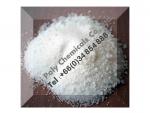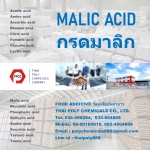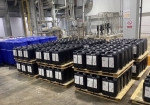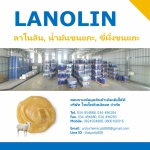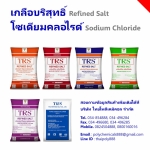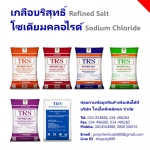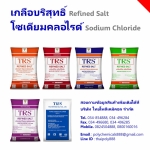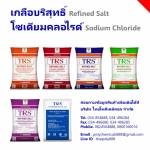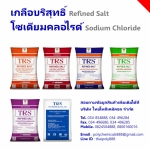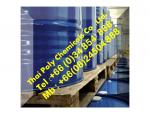Stearic acid rubber grade สเตียริกเอซิด เกรดรับเบอร์ |
฿1 |
|
ชื่อผู้ประกาศ : Thailandchemicals เบอร์โทรศัพท์ : 034854888, 034496284 โทรศัพท์มือถือ : 0824504888, 0800160016 ที่อยู่ : 36/5 ม.9 ต.นาดี อ.เมืองสมุทรสาคร ร้าน Thailand Chemicals |
Stearic
acid, สเตียริกแอซิด, กรดสเตียริก
สเตียริก แอซิด - RUBBER GRADE (STEARIC ACID)
สเตียริก
แอซิด (Rubber
Grade) เป็นผลึกสีขาว มันเงา ลักษณะเฉพาะคือมีกลิ่นหืนของไขมัน สเตียริก
แอซิดเกิดจากการผสมกันของกรดไขมันอิ่มตัวสำคัญๆ ได้แก่ กรดสเตียริก (octadecanoic) และกรดปาล์มิติก (Hexadecanoic or Palmitic Acid) ด้วยการควบคุมค่า
titre และค่ากรดที่เหมาะสม
การใช้ประโยชน์
: สเตียริก แอซิด ใช้เป็นสารช่วยการกระจายตัวและเป็นสารเร่งหรือกระตุ้นปฏิกิริยาในยางคอมพาวด์ โดยสเตียริก แอซิด มีส่วนช่วยในการกระจายตัวของสารเติมเต็มหรือเม็ดสีต่างๆ อีกทั้งยังช่วยพัฒนากระบวนการผลิต เนื่องจากมันทำหน้าที่เป็นสารหล่อลื่นที่ช่วยเพิ่มความสามารถในการไหลของยาง และช่วยให้การอัดขึ้นรูปเป็นไปได้ง่ายขึ้นด้วย กรดสเตียริก เป็นสารตั้งต้นในการผลิตสบู่ ผสมในเทียนเพื่อให้เนื้อแกร่งและจุดติดง่าย
stearic
acid กรดไขมันชนิดหนึ่งสูตรเคมีคือ C17H35COOH
เป็นผลึกสีขาว ไม่ละลายน้ำ แต่ละลายได้ในแอลกอฮอล์และอีเธอร์ พบในไขมันพืชและสัตว์
ใช้เป็นส่วนประกอบในการทำยา เครื่องสำอาง เป็นต้น
Stearic
acid (STAIR-ik or STEER-ik) is the saturated fatty acid with an 18-carbon chain and has the IUPAC name octadecanoic acid. It is a waxy solid, and its chemical "st?ar", which means tallow. The salts and esters of stearic acid are called stearates. Stearic acid is one of the most common saturated fatty acids
Production.
It occurs in many animal and vegetable fats and oils, but it is more abundant in animal fat (up to 30%) than vegetable fat (typically <5%). The important exceptions are cocoa butter and shea butter, where the stearic acid content (as a triglyceride) is 28?45%. Stearic acid is prepared by treating these fats and oils with water at a high pressure and temperature (above 200 ?C), leading to the hydrolysis of triglycerides. The resulting mixture is then distilled. Commercial stearic acid is often a mixture of stearic and palmitic acids, although purified stearic acid is available. In terms of its biosynthesis, stearic acid is produced from carbohydrates via the fatty acid synthesis
Uses
In
general, applications of stearic acid exploit its bifunctional character, with a polar head group that can be attached to metal cations and a nonpolar chain that confers solubility in organic solvents. The combination leads to uses as a surfactant and softening agent. Stearic acid undergoes the typical reactions of saturated carboxylic acids, a notable one being reduction to stearyl alcohol,
Soaps, cosmetics, detergents
Stearic
acid is mainly used in the production of detergents, soaps, and cosmetics such as shampoos and shaving cream products. Soaps are not made directly from stearic acid, but indirectly by saponification of triglycerides consisting of stearic acid esters. Esters of stearic acid with ethylene glycol; glycol stearate and glycol distearate, are used to produce a pearly effect in shampoos, soaps, and other cosmetic products. They are added to the product in molten form and allowed to crystallize under controlled conditions. Detergents are obtained
Lubricants,
softening and release agents
In
view of the soft texture of the sodium salt, which is the main component of soap, other salts are also useful for their lubricating properties. Lithium stearate is an important component of grease. The stearate salts of zinc, calcium, cadmium, and lead are used to soften PVC. Stearic acid is used along with castor oil for preparing softeners in textile sizing. They are heated and mixed with caustic potash or caustic soda. Related salts are also commonly used
Niche
uses
Being
inexpensively available and chemically benign, stearic acid finds many niche applications, for example, in making plaster castings from a plaster piece mold or waste mold and in making the mold from a shellacked clay original. In this use, powdered stearic acid is mixed in water and the suspension is brushed onto the surface to be parted after casting. This reacts with the calcium in the plaster to form a thin layer of calcium stearate, which functions as a release agent. When reacted with zinc it forms zinc stearate, which is used a lubricant for playing cards (fanning powder) to ensure a smooth motion when fanning. In compressed confections, it is used as a lubricant to keep the tablet from sticking to the die. Stearic acid is also used as a negative plate additive in the manufacture of lead-acid batteries. It is added at the rate of 0.6 g per kg of the oxide while preparing the paste{L.T. Lam et al. Journal of Power Sources 73 (1998) 36?46}. It is believed to enhance the hydrophobicity of the negative plate, particularly during dry-charging process. It also reduces the extension of oxidation of the freshly formed lead (negative active material)when the plates are kept for drying in the open atmosphere after the process of tank formation. As a consequence, the charging time of a dry uncharged battery during initial filling and charging (IFC)is comparatively lower, as compared to a battery assembled with plates which do not contain stearic acid additive. Fatty acids are classic components of candle-making. Stearic acid is used along
Stearic
acid is used to produce dietary supplements.
In
fireworks, stearic acid is often used to coat metal powders such as aluminium and iron. This prevents oxidation, allowing compositions to be stored for a longer period of time. Stearic acid is a common lubricant during injection molding and pressing of ceramic powders.[5] It is also used as a mold release
Metabolism
An
isotope labeling study in humans[6] concluded that the fraction of dietary stearic acid that oxidatively desaturates to oleic acid is 2.4 times higher than the fraction of palmitic acid analogously converted to palmitoleic acid. Also, stearic acid is less likely to be incorporated into cholesterol esters. In epidemiologic and clinical studies, stearic acid was found to be associated with lowered LDL cholesterol in comparison with other saturated fatty acids. These findings may indicate that stearic acid is healthier than other saturated fatty acids. Stearic acid is a saturated fatty acid that has an enormous variety of uses as an ingredient in food, cosmetics, and industrial products. It is extracted from many types of animal fats, vegetable fats, and some oils. It is also often used to change the consistency or melting temperature of a product, as a lubricant, or to prevent oxidation. The versatility and cost effectiveness of the acid makes it a popular ingredient in countless types of products, from candles and soap to lotion and margarine. One of the most popular uses of stearic acid is in the production of candles. It is often used to harden the wax and strengthen the candle. It also has an impact on the melting point of the wax, improving the durability and consistency of the candle. For these reasons it can be found in most craft stores in the candle making section. Stearic acid is also commonly used in the production of soap. In fact, soap may have been accidentally discovered in the ancient world by people trying to extract oil from animal fat; this process was likely similar to how stearic acid is extracted from animal fat. Soap made from animal fat, however, suffers the drawback of having low water solubility, which can result in a residual film on bathtubs and skin. Therefore, rather than as a primary ingredient, stearic acid is usually used as an additive. It can harden soaps and
In
the world of cosmetics, stearic acid is used to form a stable base for deodorants, lotions, and creams. It helps to bind and thicken the products so they adhere smoothly to the skin and have a longer shelf life. The fact that the melting point of this acid is well above human body temperature tends to prevent cosmetics from running and streaking when applied for extended periods. Stearic acid is also used in many food products because it is stable during storage and frying. Many margarines, spreads, and shortenings are formulated with it as well. Even though it is a saturated fat, it seems to have little effect on cholesterol levels in the blood. The reason for this seems to be that a high proportion of it is converted to oleic acid, which is a monounsaturated fat. Other uses of stearic acid include preventing oxidization. It is commonly used to coat metal powders such as iron and aluminum that are used in fireworks, allowing them to be stored for longer periods. It is also used in some metal polishes to help prevent the oxidation and rust that can occur on metal parts
Stearic
Acid is a typical example of a fatty acid, which are essentially long hydrocarbon chains containing a carboxyl group at one end and a methyl group at the other. The chain lengths can vary from 3 (propionic acid) to 24 (lignoceric acid) but the majority of fatty acids found in hydrogenated vegetable or animal oils are around C16-C20 in length. Stearic acid is a saturated acid, since there are no double bonds between neighbouring carbon atoms. This means that the hydrocarbon chain is flexible and can roll up into a ball or stetch out
Stearic
acid is a fatty acid. These are found in enormous quantities in natural materials. Stearic acid, for example, occurs naturally in cocoa and shea butters. All animal and vegetable oils are triglycerides, combinations of glycerol and an acid. Fatty acid is so named because it is part of this fatty mixture. We use a vegetable-based stearic acid, which can be either from a coconut or palm source. We have worked hard to eliminate palm oil from our products, especially by developing our palm-free soap base, but unfortunately it is currently impossible to source stearic acid that is completely segregated from palm. Stearic acid is a white flake or bead. It is only slightly soluble in water, but it easily dissolves in oil. It is used in soaps and cosmetics, candles, plastics and paints. We use stearic acid in our hair care products. It coats the hair shaft, giving it condition and protection without making it dull or
Stearic
acid (also called stearin or, to keep it simple, octadecanoic acid) is one of the saturated fatty acids present in animal (and vegetal) fats and oils. In the Nineteenth century, a chemist named Michel Eug?ne Chevreul discovered that animal tallow (in this time still used to make candles) wasn't a single substance but a coumpound of two fatty acids, stearic acid oleic acid, combined with glycerin to form a neutral, non flammable substance. By removing glycerin from the tallow compound, Chr?evreul invented a new substance named stearin (from the Greek "stear", which means tallow). Recent researches led to the development of a vegetal based substitute for stearine, until then always produced from animal fat. This vegetal substitute, which is gaining popularity among candlemakers upon the animal counterpart, is mainly extracted from coconut oil (or palm oil). For information, cocoa butter is made of 35%
How
and when to use Stearic acid?
In our domain, candlemaking, Stearin (that's
how I'll call it from now on) is available in powder or granulated form, has a pure white color and feels a little fat when you touch it. Its melting point is
It
is mainly used:
?to
raise the melting point of the paraffin it gets mixed with (logically, one part paraffin with a melting point of 130?F mixed with one equal part paraffin with a melting point of 150?F results in a mixture whose melting point averages 140?F). Adding a substance with a high melting point - like stearin - to
?on
the contrary, to lower the melting point of a high melting point paraffin,
?to
give the colors a pastel shade,
?to
"harden" the candle. Stearin can act as a hardener,
?to
make the candle burn longer (due to the fact that the melting point is higher).
สอบถามข้อมูลเพิ่มเติมได้ที่
ฝ่ายขาย
Thai
Poly Chemicals Co., Ltd.
บริษัท
ไทยโพลีเคมิคอล จำกัด
ที่อยู่36/5
ม.9 แขวง/ตำบลนาดี เขต/อำเภอเมืองสมุทรสาคร จังหวัดสมุทรสาคร รหัสไปรษณีย์74000
Tel.:
034854888, 034496284
Fax.:
034854899, 034496285
Mobile:
0824504888, 0800160016
Website
: www.thaipolychemicals.com
Email1 : thaipolychemicals@hotmail.com
Email2 : info@thaipolychemicals.com
กรดสเตียริกacidสเตียริคเอซิดrubberสเตียริกเอซิดกรดเสตียริกเสตียริคเอซิดกรดสเตียริคstearicเสตียริกเอซิด

